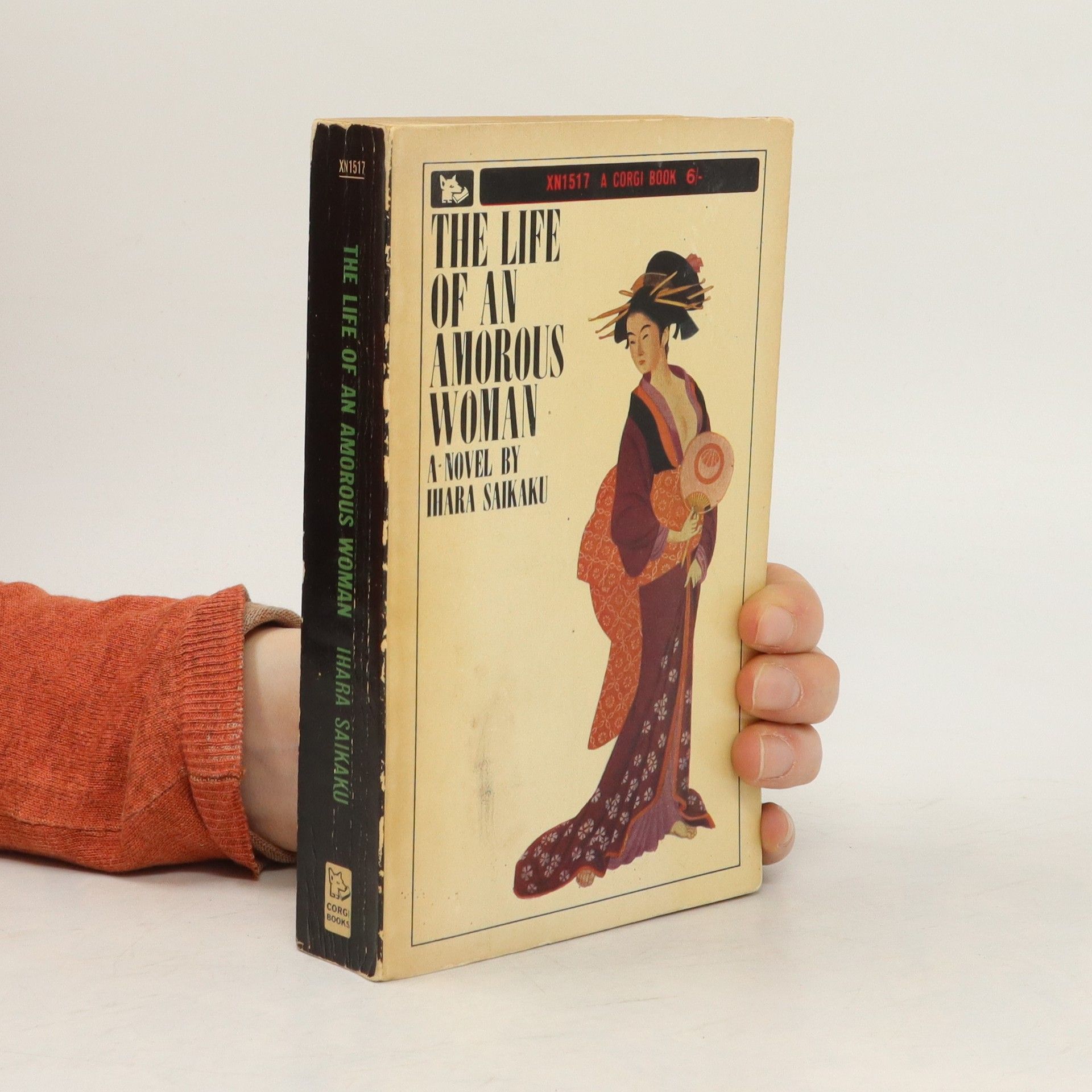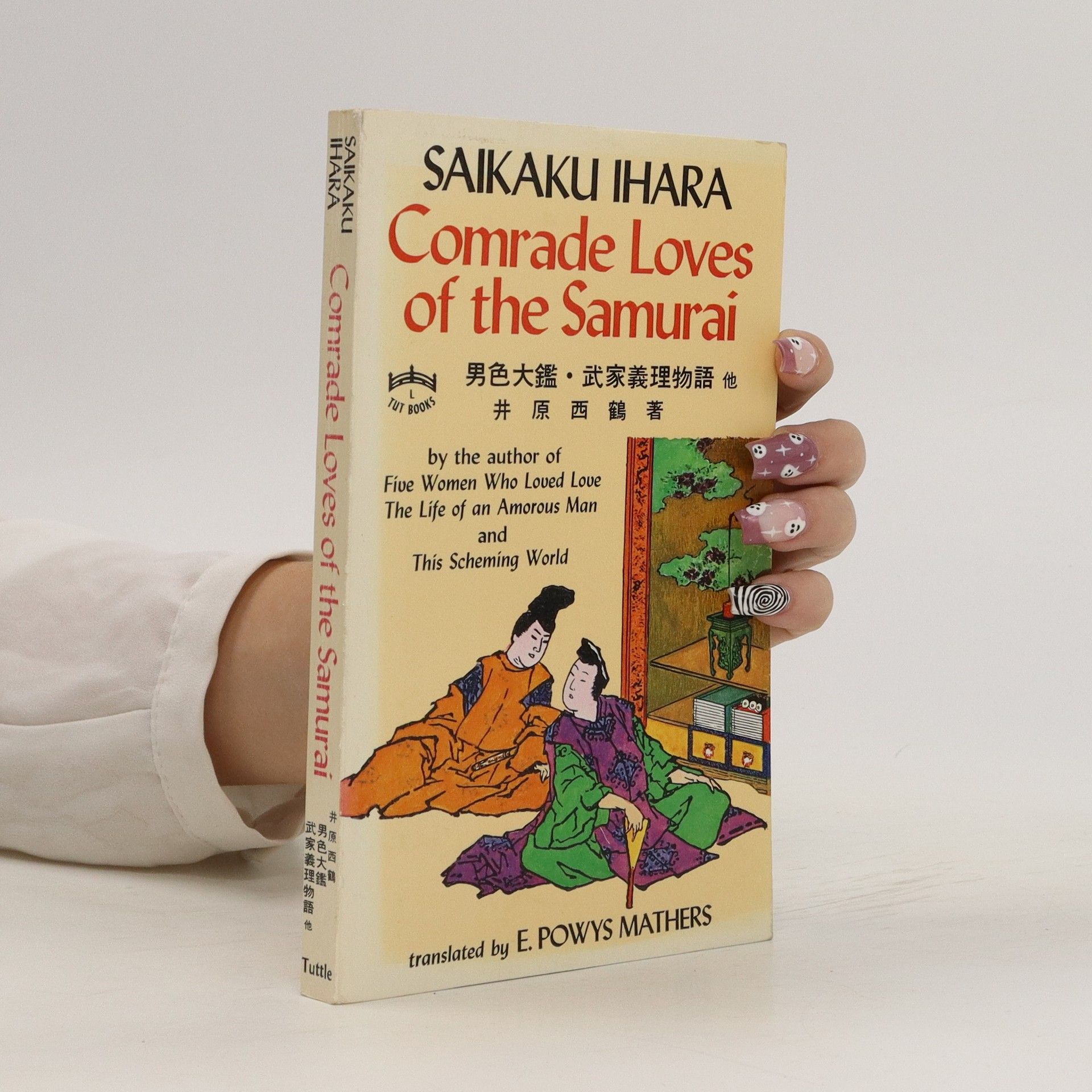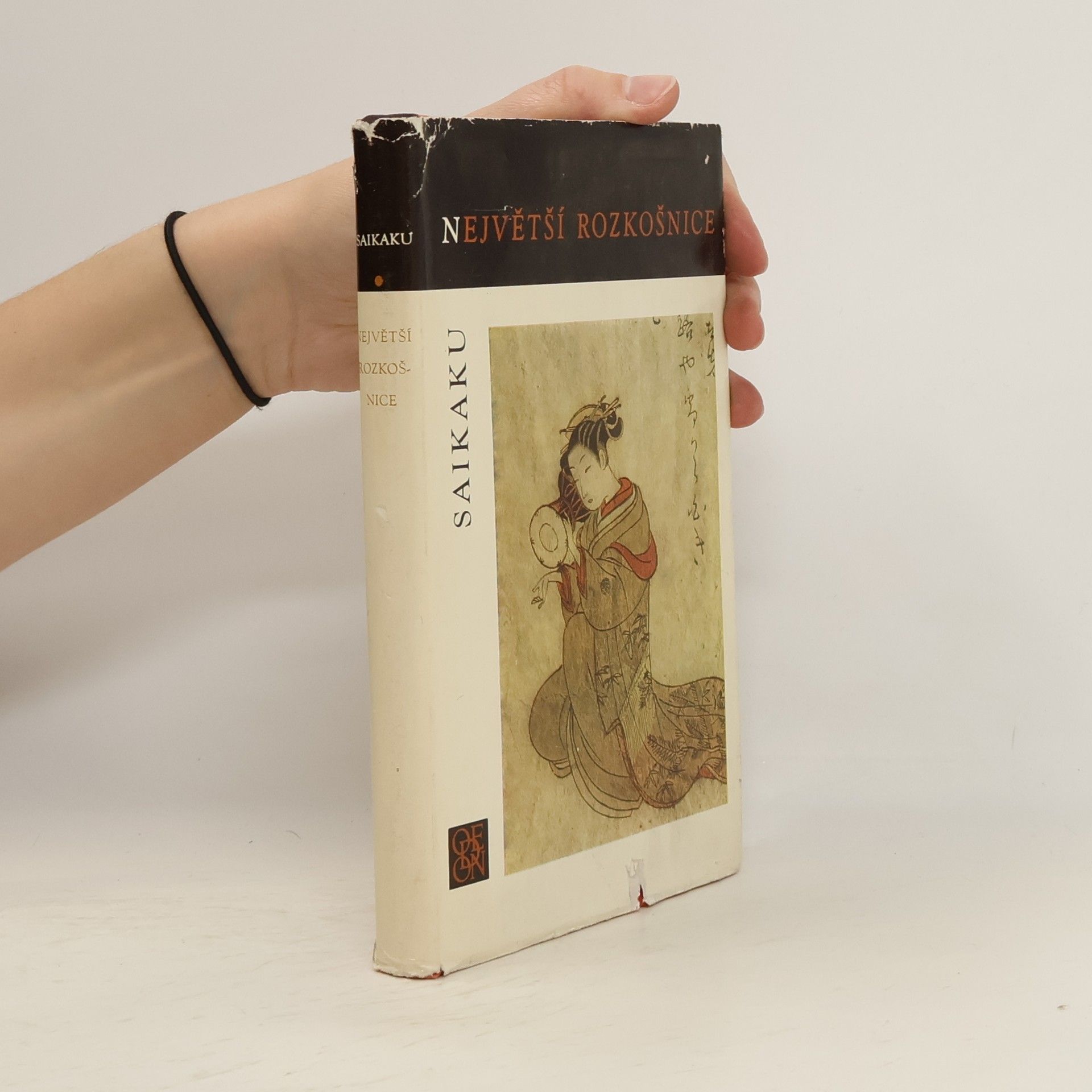Kniha zahrnuje delší novelu Největší rozkošnice a soubor povídek Pět rozkošnic japonského autora ze 17. století. Cynicky podbarvené vyprávění o povedených kouscích a milostných avantýrách dobrodruhů na okraji spořádaného života rodící se měšťanské společnosti, také však zobrazeníživota a způsobů kurtizán od nejkultivovanějších forem až po ty nejnižší.
Ihara Saikaku Knihy
Ihara Saikaku byl japonský básník a tvůrce žánru „světa plovoucího“ (ukiyo-zōshi). Jeho raná tvorba se soustředila na haikai poezii, kde dosahoval mimořádných úspěchů v improvizaci. Později se proslavil psaním o finančních a milostných záležitostech obchodní třídy a nižších společenských vrstev. Jeho příběhy, plné erotiky a humoru, odrážely vkus tehdejšího měšťanstva a bavičského světa.







Five Women Who Loved Love
- 272 stránek
- 10 hodin čtení
First published in 1686, this collection of five novellas was an immediate bestseller in the bawdy world that was Genroku Japan, and the book's popularity has increased with age, making it today a literary classic like Boccaccio's Decameron, or the works of Rabelais.
This Scheming World
Classic Tales of Desire, Deception and Greed in Old Japan
- 192 stránek
- 7 hodin čtení
Set during the lively New Year's Eve celebrations, the collection features 20 short stories that explore the humorous and often cunning interactions between debtors and money lenders. Ihara Saikaku masterfully captures the essence of human nature, making his characters relatable even after three centuries. The introduction by scholar David J. Gundry highlights the enduring relevance of these tales, showcasing Saikaku's perceptive insights into societal dynamics and personal relationships.
El gran espejo del amor entre hombres
- 456 stránek
- 16 hodin čtení
Obra escrita a comienzos del período Edo, una época de paz y prosperidad poco habitual en la historia de Japón y en la que la férrea organización confuciana de la sociedad normalizaba las relaciones homosexuales entre un adulto y un adolescente (asunto nuclear de estas cuarenta historias), El gran espejo del amor entre hombres es un clásico de la literatura universal y, a la vez, una obra netamente japonesa, en las antípodas de la tradición literaria occidental. El libro de Ihara Saikaku (1642-1693) muestra una de las facetas del ukiyo o "mundo flotante", reflejo del particular universo licencioso reinante en los kuruwa o barrios cerrados consagrados al placer, en cuyo seno los miembros de la rígida sociedad del sogunato Tokugawa -sobre todo los samuráis (o funcionarios) y los chonin (artesanos, comerciantes y artistas)- podían mezclarse entre sí sin más cortapisa social que la que dispusiera el dinero. El presente volumen reúne tanto las «Historias de samuráis» como las «Historias de actores» procedentes del mundo del kabuki. Traducción de Carlos Rubio y Akiko Imoto
Obowiązki wojownika to zbiór krótkich opowiadań, w których dzisiejszy czytelnik może odkryć barwny świat XVII-wiecznej Japonii.
Amores de un vividor
- 472 stránek
- 17 hodin čtení
Amores de un vividor es una gran novela picaresca, dentro de la mejor tradición de la literatura japonesa. Y en muchos sentidos abre una época de novedades, pues aunque se publicó seis años antes de la era Genroku (1688-1703), Edad de Oro de las letras y artes japonesas, Amores de un vividor parece adelantarse a dicha época. Este libro marca además el nacimiento de la novela realista en Japón. Aparece en el ambiente de un país cerrado al extranjero y dominado por la dictadura de la familia militar Tokugawa. Es la época de la consolidación de las grandes ciudades, de los barrios de placer dentro de ellas, y --por antonomasia-- del auge de la burguesía. La obra de Saikaku, en ese paradójico mundo de represión y tolerancia, constituye un canto a la libertad de opción del individuo ante la sociedad, y a la capacidad de autodeterminación de la mujer dentro de un marco creado por y para el hombre. Con el protagonista de Amores de un vividor, Yonosuke («hombre de mundo»), vamos conociendo las diversas facetas de la vida de su siglo, desde la mística hasta el libertinaje, siempre al hilo de una irrefrenable pasión sexual.

